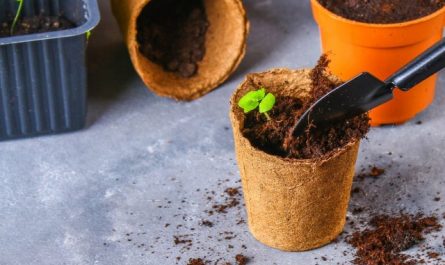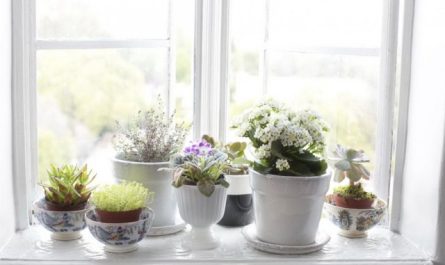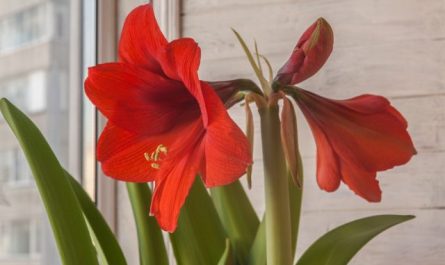Cacti are typical representatives of desert landscapes. But they are also great as indoor plants. They come in different shapes and sizes and always surprise with their sculpture without special care. Cacti are really easy to maintain, but it is important to know their basic needs to grow a happy flower.

1. Give the cactus enough light
Cacti require a lot of direct light. Place them in the warmest and brightest corner of the room. It is advisable to provide cacti with at least 6 hours of bright sunlight per day. A window facing south or west is good. In low light conditions, use a phytolamp for additional lighting.
If you see that the plant is starting to lose color – turn yellow or acquire an orange tint, immediately move it to another place. Usually this indicates excessive lighting. Most often this happens with forest cacti (Schlumbergera, Rhipsalis). They need more shaded conditions.
2. Don’t water the cactus too much.
Although cacti store water in their stems and survive without significant amounts of moisture, this does not mean that they do not need watering at all. Be sure to check the soil every few weeks. If the top 10 cm of soil is dry, it is time to water the plant.
Make sure to wet the soil thoroughly when watering, then pour out any excess from the tray to avoid waterlogging.

The frequency of watering also depends on the season. You can water the cactus every 10-14 days in the summer, and once every three to four weeks in the winter. Remember that the main reason for the death of cacti is excessive watering. It leads to rotting. It is better to err on the side of under-watering, and it is much easier to revive a cactus from drying out. If you notice wrinkles on the plant, it means it needs to be watered. The cactus will quickly absorb the water and become plump again.
3. Choose specialized soil
The substrate for the cactus should be well-drained. You can buy a special mixture for cacti and succulents at a flower shop or make it yourself. To do this, add some sand and gravel to the garden soil to make it crumbly and not too compacted.
To check the quality of the substrate, you need to determine the amount of time it takes for the water to seep through. Ideally, it should not take more than a minute. If it takes longer, add more fine gravel and sand.
4. The key to a quality transplant
It is best to repot the cactus when the roots completely fill the pot. On average, cacti need to be repotted every 2-4 years. If you regularly feed the plant throughout the season, then repotting can be done less often.
Before repotting the cactus, check the root system and trim off any dead or damaged shoots. It is advisable to let the roots air out for 2-3 days before repotting. This will make it much easier to identify damaged and dead roots. It is advisable to wrap very prickly cacti in cardboard when repotting to protect your hands.
It is better to use terracotta pots for planting. This provides greater aeration of the root system and provides additional opportunities for absorbing excess moisture from the soil. The best time to replant cacti is spring. After planting, water regularly for the first couple of weeks, and then return to the normal watering schedule.
5. Monitor humidity
Cacti prefer low humidity and thrive in average apartment humidity (40%) or lower. Avoid placing them in the bathroom, kitchen, or other high humidity area. This can lead to fungal diseases because the soil will be wet for too long.

6. Observe the temperature regime
Cacti prefer high temperatures from 15 °C to 27 °C, but can tolerate lower thermometer readings in winter. For example, with completely dry soil, the minimum possible temperature is +5. However, they should be protected from drafts and sudden changes.
7. Send them on a summer “vacation”
If you have a sunny balcony or terrace, your cacti will happily go on a “summer vacation”. They will grow much faster outdoors than indoors.

Do not take the plants outside until night temperatures exceed +10 °C. Acclimate your cacti slowly, first placing them in partial shade to prevent them from getting burned. If the plants start to turn yellow or brown, move the cacti into the shade. In late summer, bring them back indoors before night temperatures start to drop below +10 °C.
8. Feeding is not like everyone else’s
Fertilizer can either speed up the growth of your cacti or kill them. Fertilizers for these flowers should contain little nitrogen and a lot of phosphorus. A better solution would be to purchase specialized fertilizer for cacti, as it has the right balance of nutrients. Fertilize flowers only when they are actively growing, at any other time it can lead to damage to the root system.
Important! Cacti are used to poor soils. If you have recently replanted them, they will not need fertilizers. Here, as with watering, the rule works: “Better less.”
9. Monitor for pests and diseases
Despite the fact that cacti are quite hardy, they still suffer from pests and pathogens. It is very important to regularly check the plants for signs of aphids, spider mites and thrips. At the same time, mealybugs and scale insects are two of the most common pests. They are very comfortable among the thorns on the surface of cacti. Such pests can cause great harm to the plant and even kill it if measures are not taken quickly.

The most common problem with cacti is fungal diseases caused by overwatering. This often precedes the appearance of pests, as they attack the plant when it is already weakened.
Basic rules for propagating cacti
Method No. 1. “With kids”
Propagating cacti with “babies” is a simple and fun process. With good care and attention, the “babies” will take root and turn into a new plant within a month.
Put on gloves and carefully unscrew the “babies” from the cactus with your fingers or tweezers. After that, place them in a cool and well-ventilated place so that the wound heals. This will prevent infections and rotting. The process usually takes 3-5 days.

Plant them in a well-drained soil mix with some sand and perlite. It’s important to mist the top layer of soil for the first week until new roots start to grow. Once the “babies” are established, it’s time to water them generously.
Method No. 2. Cuttings
Most cacti can be easily propagated by stem cuttings. This applies especially to those with segmented stems, such as prickly pears, Schlumbergera, etc.
- First, select a shoot at least 10 cm long and carefully cut it with sharp scissors.
- Place the cutting in a dry place with bright indirect light. There the cutting will lie for several days to a week until the cut becomes rough.
- Once the cutting has hardened and the wound has healed, plant it in well-drained soil and water thoroughly.
- Then place the plant in a bright, indirect light location and keep the soil moist until full roots form. The cutting will be fully rooted in 2-6 weeks.
Method No. 3. Propagation of cacti by seeds
- To sow, you will need a shallow container and a well-drained soil mix. Scatter the seeds over the surface. Some species need light to germinate, so do not plant them too deep.
- Use a spray bottle to mist the soil. This will ensure that it is moist but not waterlogged.
- When the cacti sprout, the seedlings will be fragile and tender. They need bright, indirect light. Too much sun will quickly kill them. Water moderately; overwatering is also harmful to the little cacti.
The main condition for growing seedlings is patience. Cacti grow slowly, but watching them grow is fascinating, and it is worth the wait. Watch out for pests and fungi. The little ones will not be able to resist them.




















